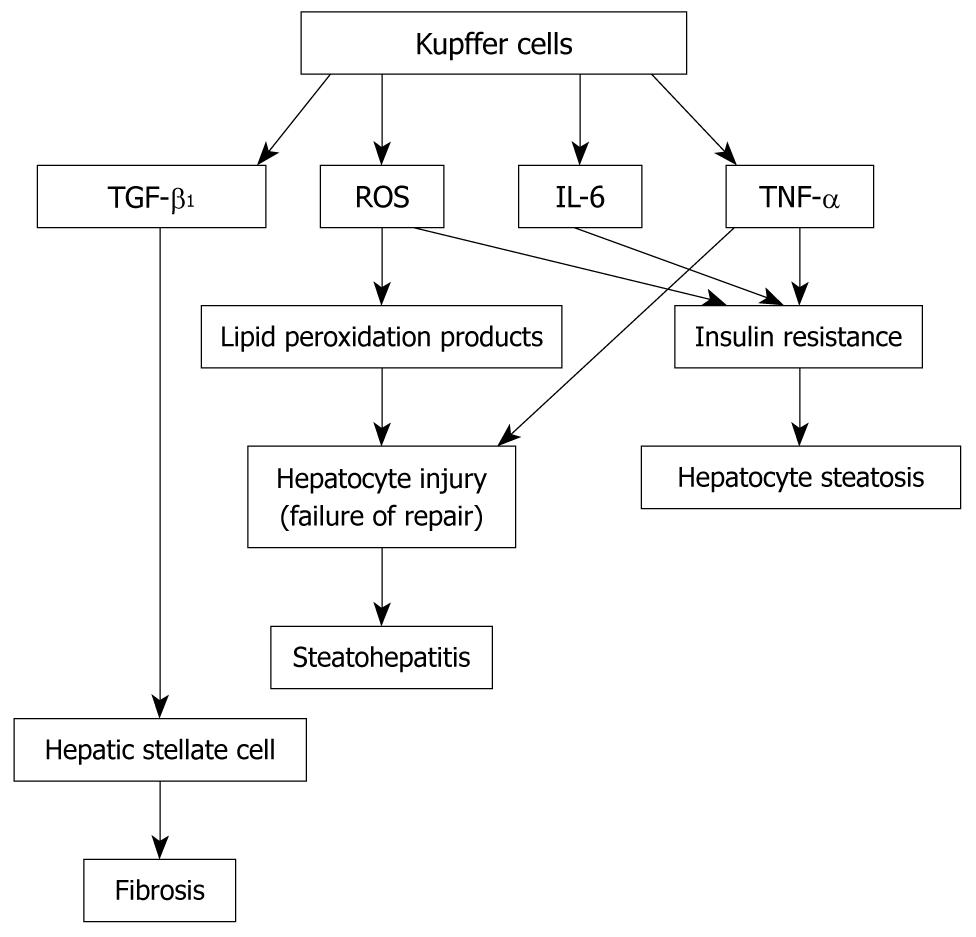Copyright
©2010 Baishideng Publishing Group Co.
World J Gastroenterol. Oct 7, 2010; 16(37): 4652-4660
Published online Oct 7, 2010. doi: 10.3748/wjg.v16.i37.4652
Published online Oct 7, 2010. doi: 10.3748/wjg.v16.i37.4652
Figure 1 Mechanisms for the role of Kupffer cells in the development of nonalcoholic fatty liver disease.
(1) Activated Kupffer cells (KCs) produce reactive oxygen species (ROS), interleukin-6 and tumor necrosis factor-α (TNF-α), which induce insulin resistance, leading to hepatocyte steatosis; (2) Activated KC-derived ROS causes lipid peroxidation production. Lipid peroxidation products and KC-derived TNF-α result in hepatocyte injury. Failure to repair hepatocytes after injury promotes the development of steatohepatitis; and (3) Activated KCs produce transforming growth factor-β1, which activates hepatic stellate cells. Activated hepatic stellate cells produce large quantities of extracellular matrix, leading to fibrosis.
- Citation: Zhan YT, An W. Roles of liver innate immune cells in nonalcoholic fatty liver disease. World J Gastroenterol 2010; 16(37): 4652-4660
- URL: https://www.wjgnet.com/1007-9327/full/v16/i37/4652.htm
- DOI: https://dx.doi.org/10.3748/wjg.v16.i37.4652









